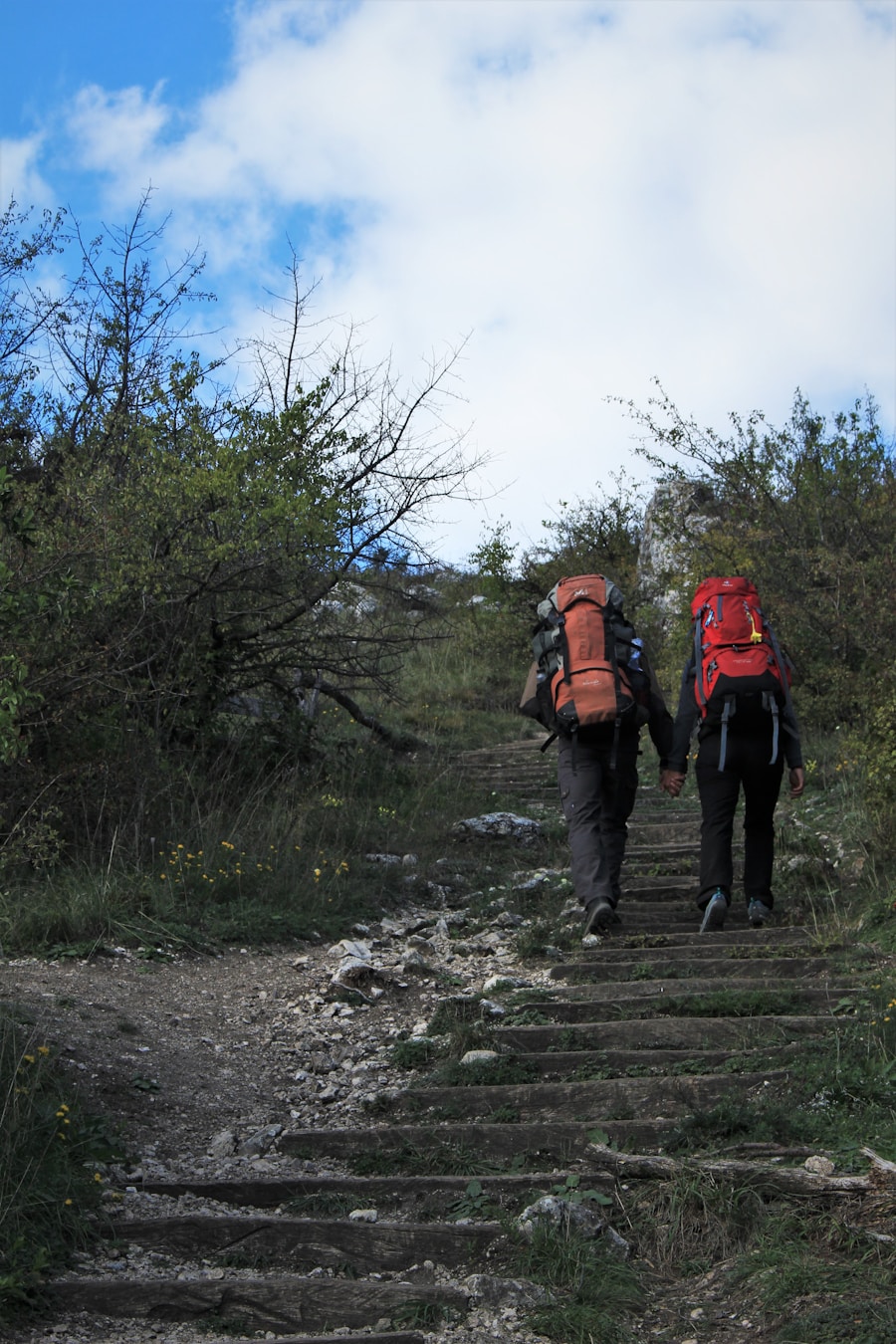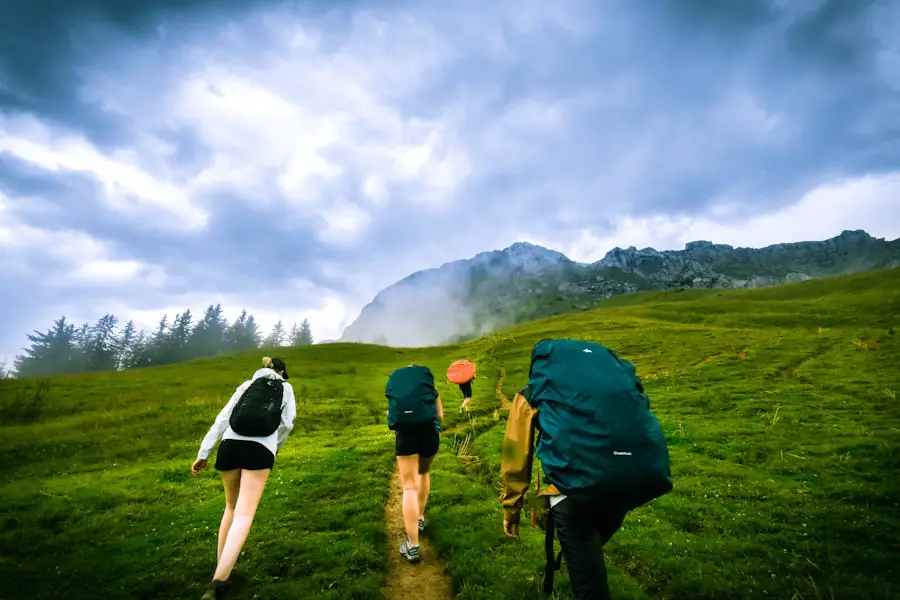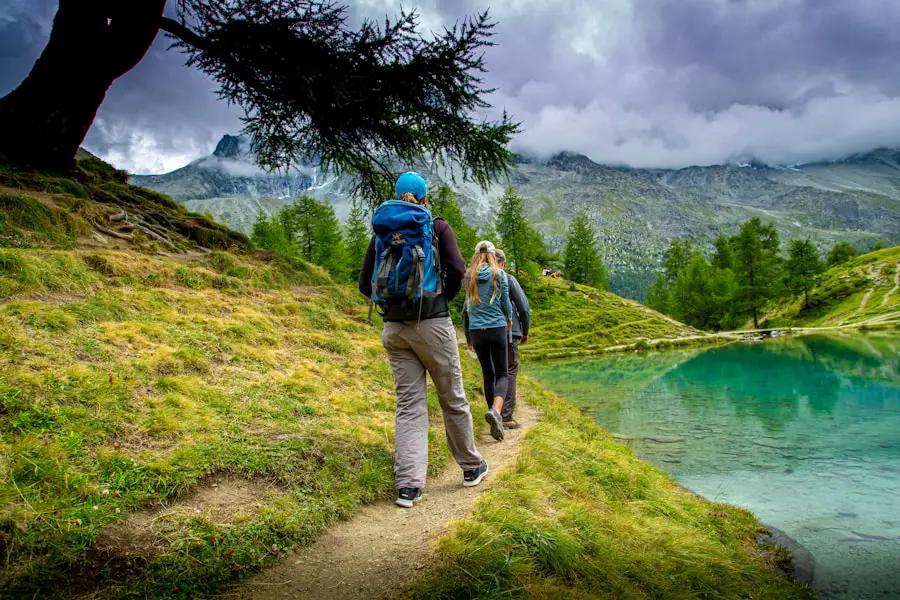Trekking and hiking are terms often used interchangeably, yet they embody distinct experiences that cater to different preferences and skill levels. At its core, trekking refers to a long, adventurous journey undertaken on foot, typically through remote and rugged terrains. It often involves multi-day excursions that may require camping or staying in basic accommodations along the route.
Trekking is characterized by its emphasis on exploration and immersion in nature, often leading participants through diverse landscapes, from mountains to forests, and sometimes even across international borders. Hiking, on the other hand, is generally perceived as a shorter, less strenuous activity that can be enjoyed on well-marked trails. Hikes can range from leisurely strolls in local parks to more challenging day hikes in mountainous regions.
The primary focus of hiking is often on the enjoyment of the scenery and the physical activity itself, rather than the journey’s length or the remoteness of the location.
While both activities promote outdoor engagement and physical fitness, trekking tends to attract those seeking a more immersive experience in nature, often with a sense of adventure and exploration.Key Takeaways
- Trekking involves multi-day hikes, often in remote areas, while hiking typically refers to shorter, day-long walks on established trails.
- Trekking trips can last from a few days to several weeks, covering long distances and requiring a higher level of physical fitness, while hiking trips are usually shorter and less physically demanding.
- Trekking often takes place in rugged, mountainous terrain, while hiking can be done in a variety of environments, from forests to deserts to coastal paths.
- Trekking requires specialized gear such as trekking poles, sturdy hiking boots, and a backpack with camping gear, while hiking may only require comfortable shoes, a daypack, and water.
- Trekking often involves immersion in local cultures and traditions, while hiking may focus more on the natural environment and wildlife.
Duration and Intensity
The duration and intensity of trekking and hiking are significant factors that differentiate the two activities. Trekking typically spans several days, with participants covering extensive distances each day. This prolonged engagement requires not only physical endurance but also mental resilience, as trekkers navigate through challenging terrains and varying weather conditions.
For instance, the Inca Trail to Machu Picchu is a classic trekking route that spans approximately 26 miles over four days, demanding both stamina and preparation from those who embark on it. In contrast, hiking can be tailored to fit a wide range of time commitments and fitness levels. A hike can last anywhere from a couple of hours to an entire day, making it accessible for individuals with varying degrees of physical ability.
For example, a popular day hike like the Angels Landing trail in Zion National Park offers breathtaking views but can be completed in a few hours by those in reasonable shape. The flexibility in duration allows hikers to choose routes that match their fitness levels and time constraints, making hiking a more approachable option for casual outdoor enthusiasts.
Terrain and Environment

The terrain and environment encountered during trekking and hiking further highlight their differences. Trekking often takes place in remote areas where trails may be less defined or even non-existent. Trekkers may find themselves traversing rugged mountain paths, crossing rivers, or navigating through dense forests.
The diverse environments encountered during a trek can include high-altitude landscapes, alpine meadows, or arid deserts, each presenting unique challenges and rewards. For instance, the Annapurna Circuit in Nepal offers trekkers a chance to experience a variety of ecosystems, from lush subtropical forests to stark high-altitude deserts. Hiking, while it can also involve varied terrains, is more commonly associated with established trails that are designed for easier navigation.
These trails are often well-maintained and marked, making them suitable for a broader audience. Hikers might find themselves walking along scenic lakeshores, through gentle hills, or on flat paths in urban parks. The accessibility of hiking trails allows individuals to enjoy nature without the need for extensive preparation or specialized skills.
For example, the Appalachian Trail features sections that cater to both novice hikers and seasoned adventurers, providing options for everyone.
Gear and Equipment
| Category | Number of Items | Cost (USD) |
|---|---|---|
| Hiking Gear | 150 | 25,000 |
| Camping Equipment | 100 | 15,000 |
| Cycling Gear | 75 | 12,500 |
| Fishing Equipment | 50 | 8,000 |
The gear and equipment required for trekking and hiking can vary significantly due to the differences in duration, intensity, and environment. Trekkers typically need to invest in specialized gear that supports multi-day excursions. This includes durable backpacks designed to carry essential supplies such as food, water, sleeping bags, tents, cooking equipment, and clothing suitable for varying weather conditions.
High-quality trekking boots are also crucial for providing support and traction on uneven terrain. For instance, trekkers on the Pacific Crest Trail often rely on lightweight gear to minimize their load while ensuring they have everything needed for weeks on the trail. Hikers, conversely, may require less specialized equipment depending on the length and difficulty of their chosen trail.
A day hike might only necessitate a comfortable pair of walking shoes or lightweight hiking boots, a small backpack for water and snacks, and appropriate clothing for the weather. Many hikers opt for versatile gear that can be used across different activities, such as moisture-wicking shirts or quick-dry pants. For example, a casual hike in a local park may only require a water bottle and a light jacket if the weather is unpredictable.
This accessibility makes hiking an appealing option for those who may not want to invest heavily in outdoor gear.
Cultural and Experiential Differences
The cultural aspects surrounding trekking and hiking can greatly influence the experiences of participants. Trekking often involves engaging with local communities and cultures along the route. Many trekking routes pass through villages where trekkers can interact with locals, learn about their customs, and even participate in traditional practices.
For instance, trekkers on the Torres del Paine Circuit in Chile may encounter indigenous communities that share their knowledge of the land and its history. This cultural immersion adds depth to the trekking experience, allowing participants to connect with the environment on a more profound level. Hiking experiences tend to be more solitary or focused on personal enjoyment rather than cultural engagement.
While some hiking trails may pass through historical sites or areas of cultural significance, the primary goal is often centered around appreciating nature’s beauty rather than interacting with local cultures. Hikers may find themselves enjoying scenic vistas or wildlife encounters without necessarily delving into the cultural context of their surroundings. For example, a hike through Yosemite National Park allows individuals to marvel at iconic landmarks like El Capitan or Half Dome while focusing primarily on the natural landscape rather than its historical significance.
Safety Considerations

Safety is a paramount concern for both trekkers and hikers, but the considerations can differ based on the nature of each activity. Trekking often involves navigating remote areas where access to help may be limited. Trekkers must be prepared for various challenges such as sudden weather changes, altitude sickness in high-altitude treks, or injuries sustained from difficult terrain.
It is essential for trekkers to carry comprehensive first aid kits, know basic survival skills, and have contingency plans in case of emergencies. For instance, trekkers on the Everest Base Camp trek must acclimatize properly to avoid altitude sickness while being aware of their surroundings. Hikers also need to prioritize safety but may face different risks depending on their chosen trails.
Day hikers should be aware of potential hazards such as wildlife encounters or sudden weather changes but generally have easier access to help if needed due to their proximity to urban areas or well-traveled paths. Carrying sufficient water, wearing appropriate footwear, and informing someone about their hiking plans are essential safety measures for hikers. For example, hikers on popular trails like Mount Rainier should be cautious of changing weather conditions while ensuring they have adequate supplies for their journey.
Health Benefits
Both trekking and hiking offer numerous health benefits that contribute positively to physical and mental well-being. Engaging in either activity promotes cardiovascular health by increasing heart rate and improving circulation. The aerobic nature of both trekking and hiking helps strengthen the heart muscle while enhancing lung capacity through increased oxygen intake during exertion.
Regular participation in these activities can lead to improved endurance levels over time. In addition to cardiovascular benefits, trekking and hiking provide opportunities for weight management and muscle toning. The varied terrains encountered during these activities engage different muscle groups, particularly in the legs and core.
For instance, trekking uphill requires significant effort from quadriceps and calves while also engaging stabilizing muscles in the core for balance. Hiking on uneven surfaces similarly challenges muscles while promoting flexibility and coordination. Furthermore, spending time outdoors has been shown to reduce stress levels and improve mental health by fostering a connection with nature.
Choosing the Right Activity for You
When deciding between trekking and hiking, individuals should consider their personal preferences, fitness levels, and desired experiences. Those seeking adventure and an immersive experience in nature may find trekking more appealing due to its longer duration and cultural engagement opportunities. However, it is essential to assess one’s physical readiness for multi-day excursions that require endurance and preparation.
Conversely, individuals looking for a more casual outdoor experience might prefer hiking due to its flexibility in duration and intensity. Hiking allows for spontaneous outings without extensive planning or gear requirements while still providing an opportunity to enjoy nature’s beauty. Ultimately, both activities offer unique experiences that cater to different interests; understanding one’s goals will help guide the decision-making process when choosing between trekking and hiking.
If you are interested in exploring the great outdoors, you may be wondering about the difference between trekking and hiking. Trekking typically involves longer, more challenging journeys that can last for several days or even weeks, while hiking is usually a shorter, less intense activity. For more information on the benefits of trekking and hiking, check out this article on The Magi’s Journey: How Far to Bethlehem.
FAQs
What is trekking?
Trekking is a long and challenging journey, typically on foot, through remote and often rugged areas. It usually involves multi-day trips and can include camping and carrying all necessary supplies.
What is hiking?
Hiking is a leisurely walk or a day trip, usually on well-marked trails and paths. It is generally less strenuous and demanding than trekking and can be completed in a few hours.
What are the main differences between trekking and hiking?
The main differences between trekking and hiking are the duration, difficulty, and the type of terrain. Trekking involves longer journeys, often through remote and challenging terrain, while hiking is typically shorter and less demanding.
What kind of equipment is needed for trekking and hiking?
For trekking, specialized equipment such as trekking poles, sturdy hiking boots, and camping gear may be necessary. For hiking, comfortable walking shoes, a daypack, and water are usually sufficient.
Are there different skill levels required for trekking and hiking?
Trekking generally requires a higher level of physical fitness, endurance, and outdoor skills due to the longer duration and more challenging terrain. Hiking can be enjoyed by people of various fitness levels and skill sets.
Can trekking and hiking be done in the same locations?
Yes, many locations offer both trekking and hiking opportunities. For example, a mountainous area may have both challenging multi-day treks and shorter, easier day hikes available.
